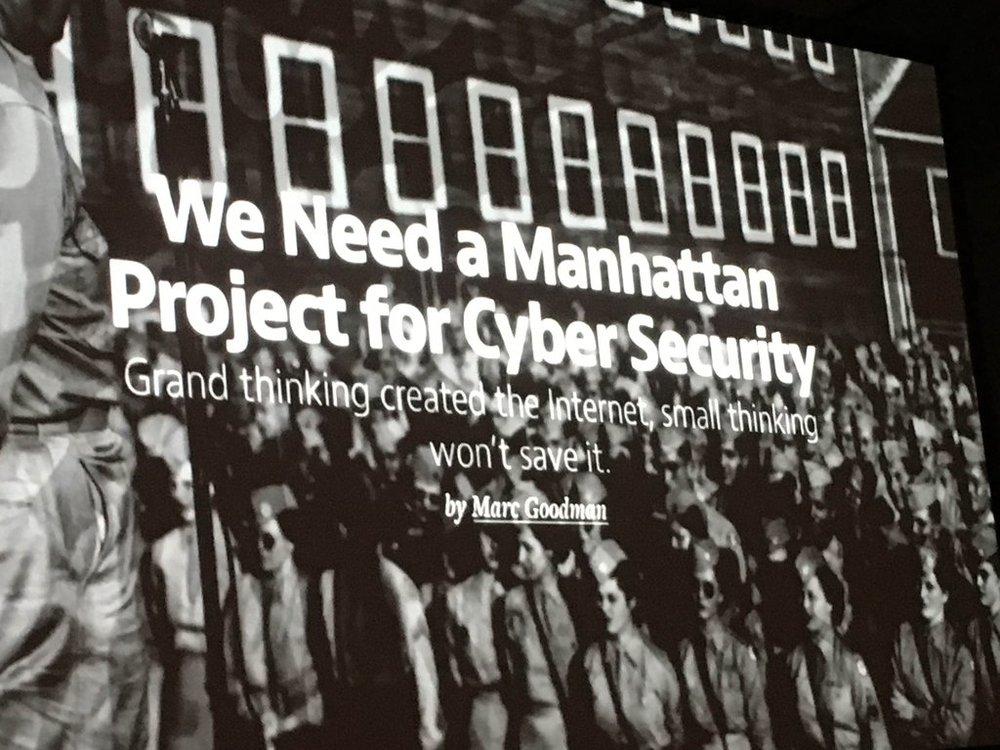Technological advances give us many reasons to rejoice. I mean, the Internet alone…whoa. Bringing people together, opening up opportunities, educating the masses, ensuring that I can watch NCAA March Madness on my iPhone – from any location (during a meeting, for example).
But, alas, there’s a darker side. Isn’t there always? In a fascinating MRC Vegas keynote presentation, Marc Goodman laid out some unsettling potential scenarios for how cybercriminals could take advantage of technological innovations.
Goodman got his start as a street police officer, undercover investigator, and counter-terrorism strategist. He admits that spending so much time dealing with the shadier side of humanity has colored his worldview – but, listening to him speak, it’s hard not to feel the same unease.

A slide from Marc Goodman’s presentation at MRC Vegas 2016
Exponential technology, exponential crime
Goodman summarizes today’s cybercrime environment with three words: exponential, automated, and three-dimensional. Have you heard of Moore’s Law, which explains how computers’ processing power is doubling every two years? Goodman coined the phrase “Moore’s Outlaw” to describe the criminal who takes advantage of this rapid pace of innovation.
We should always remember that exponential technology advancements help both the good guys and the bad guys. In fact, criminals adopt technology even faster than crime fighters, which puts the good guys at higher risk.
In the old days, thieves would hide in an alley until a hapless victim happened along, then demand their wallet. They could only rob a few people a day this way. But these days, technology allows criminals to operate on a greater (and more alarming) scale. Just think of the Target hack: around 70 million people’s “wallets” were stolen.
Technological advances enable automation
At Sift Science, we usually talk about automation in a positive light – fraud teams can automate aspects of their fraud management workflow to become more efficient, saving time and money. Automation delivers these benefits across so many industries, thanks to innovations in technology.
But hackers also have a workflow, and they’re looking for the same type of benefits as the rest of us. Goodman explains how enterprising criminals are turning cybercrime into more of a turnkey experience, with automated phishing kits, malware, and bots that are cheaply and easily available and don’t require sophisticated knowledge to deploy. In fact, the same technology that is so effective at combating fraudsters at scale – cloud software and big data – is being leveraged to commit cyber crimes at scale.
A Manhattan Project for cybercrime?
So, how do we address the massive threat posed by cybercriminals taking advantage of exponential technology? Goodman suggests something along the lines of the Manhattan Project, where the government, the private sector, non-profits, and individuals all band together to strategize about and address cybercrime as a cohesive unit.
Whether or not this type of large-scale collaboration will come to light is an open question. But what isn’t debatable is that hackers and cybercriminals are already sharing their own knowledge and learning from each other so they can stay one step ahead. Goodman makes it clear that this threat should be taken seriously.
